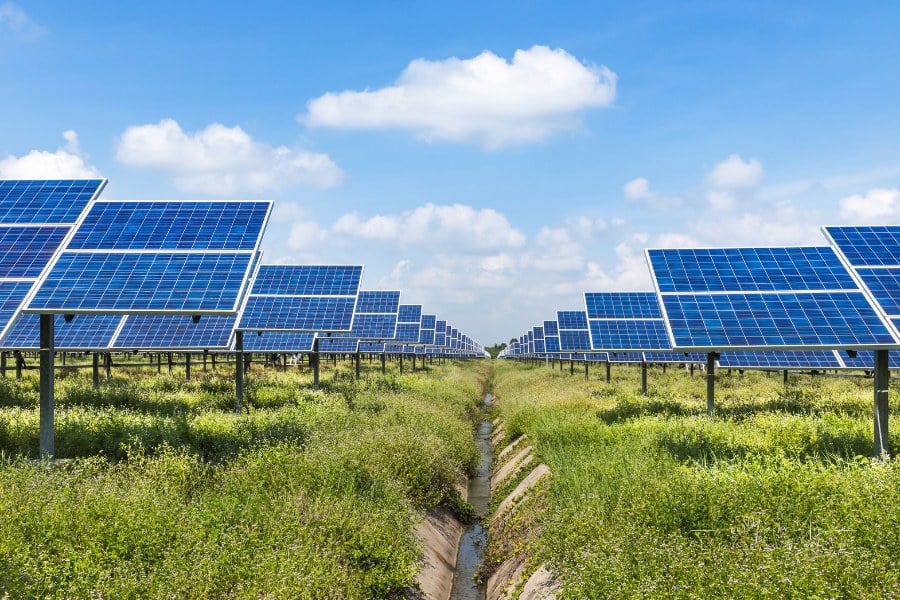Grid-Tied vs. Off-Grid Solar: Which One to Choose for Your Home?
Solar is booming. In 2023, approximately 7.7 GW-hours (GWh) (2.5 GWac) of energy storage was fed into the electric grid.
If you are considering diving into the solar scene, you’re likely standing at the crossroads of sustainability with the question—grid-tied or off-grid solar for your humble abode?
It’s not a one-size-fits-all scenario. You’ve got choices to make, and each has its own perks and pitfalls.
Let’s tour these solar landscapes and understand the differences between the panels and wires.

What are grid-tied solar systems?
Grid-tied solar systems, sometimes referred to as on-grid or grid-feed systems, stand as the reigning champions in solar setups, boasting popularity in residential homes and businesses.
The fundamental characteristic that defines these systems is their seamless connection to the local utility grid.
A grid-tied solar system works harmoniously with your home’s power supply, strategically delivering energy based on availability.
It synchronizes its power delivery with the grid, ensuring a balanced performance.
This system comprises key components: the grid-tie inverter (GTI) or microinverters and the power meter.
The solar panels start the energy production, converting sunlight into DC (direct current).
The inverter then works its magic, transforming DC into AC (alternating current), coursing through a switchboard to power up your home and appliances.
During times of insufficient solar energy, like cloudy days or the cover of night, the inverter smoothly switches back to the reliable grid power source.
Grid-tied systems are not only eco-savvy but also wallet-friendly—no need to break the bank on an expensive battery backup system—these systems operate practically, making sustainability and affordability go hand in hand.
What are off-grid solar systems?
Off-grid solar systems break free from the traditional ties of the power utility grid, charting a course of self-sufficiency fueled by one mighty force—sunlight.
It’s a system that stands alone, disconnected from external power sources, relying solely on the sun’s abundant rays to power your homestead.
This rebel in the solar family is not for the faint of heart, though, as its complexity comes hand in hand with a heftier price tag when compared to its grid-tied counterpart.
The components that make up this off-grid setup are a solar charge controller, a battery bank, an off-grid inverter, an optional DC Disconnect, and, for those who crave extra assurance, a backup generator.
The off-grid solar system taps into the energy harnessed by solar panels, directing it to charge a solar battery through the vigilant oversight of a charge controller.
This controller limits the stored electricity in the battery bank and also shields it from the perils of overcharging.
The stored electricity undergoes a transformative journey, converting into AC through the off-grid inverter, ultimately electrifying your home.
What sets this system apart is its ability to store excess electricity in the battery bank, granting your home the power to thrive exclusively on solar energy even during the darkest hours or overcast days.
Choosing the right solar system for your needs
To navigate this big decision, consider the following factors:
- Budget:
If frugality is your guiding star, the grid-tied solar system emerges as the cost-effective hero.
Not only does it trim your monthly electricity bills, but it can even lead to financial gains through credit generation.
Conversely, the off-grid alternative demands a more substantial upfront investment.
The additional equipment, such as pricey battery banks, can make this system a bit costlier to set up.
- Location:
If you’re nestled in an urban cocoon with power lines at your beck and call, the grid-tied system seamlessly integrates into your lifestyle, and you’ll have plenty of contractors who can help with the installation.
However, for those dwelling in the outskirts, where the tendrils of the power grid fail to reach, the off-grid system emerges as the knight in shining solar armor, ready to power up your home.
- Your Energy Needs:
For the power-hungry abodes, the grid-tied solar system stands as a stalwart ally, providing a reliable backup to ensure you never find yourself in the dark.
Yet, the off-grid system holds a unique advantage if your dwelling is more modest in size or resides in an area prone to frequent power outages. Its ability to store power ensures a continuous energy supply, day or night.
Pro tip: Before installing any solar, ensure your roof is in great condition to avoid future issues.
Looking for other ways to improve your home?
Our Family Lifestyle is your go-to resource for a range of home and parenting tips to help make life easier and more enjoyable. Add us to your bookmark list and check in regularly for our continually updated articles.


